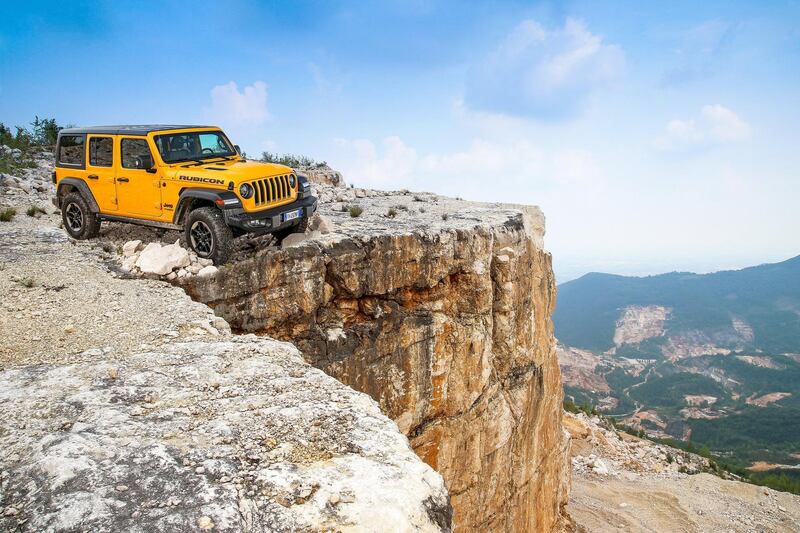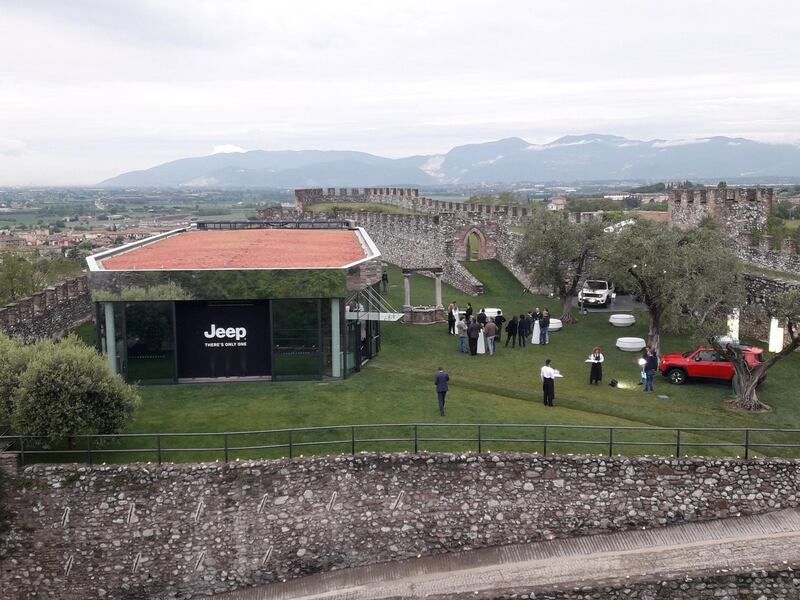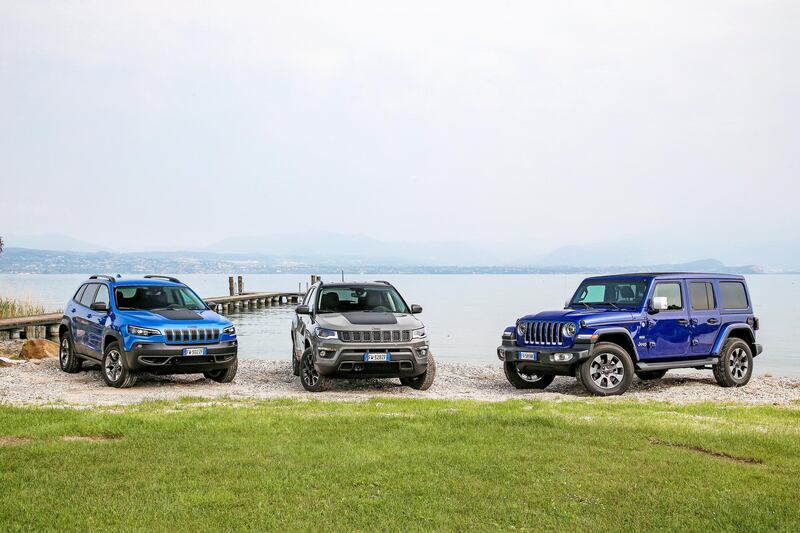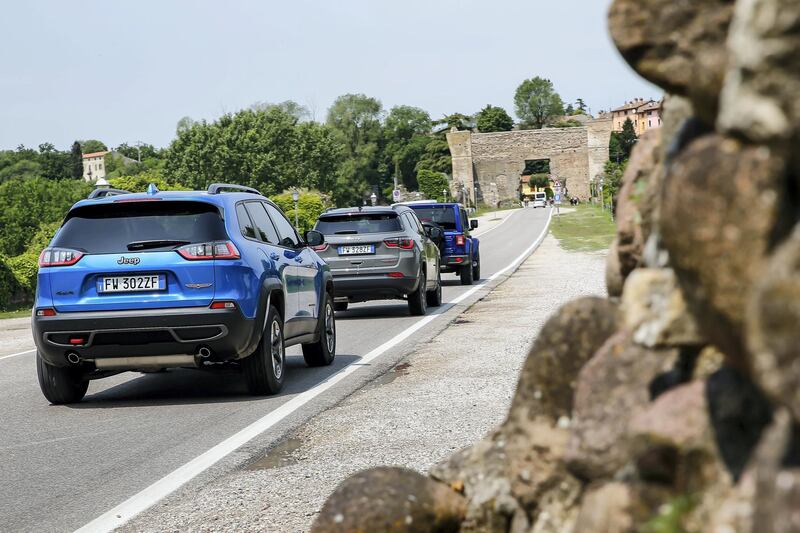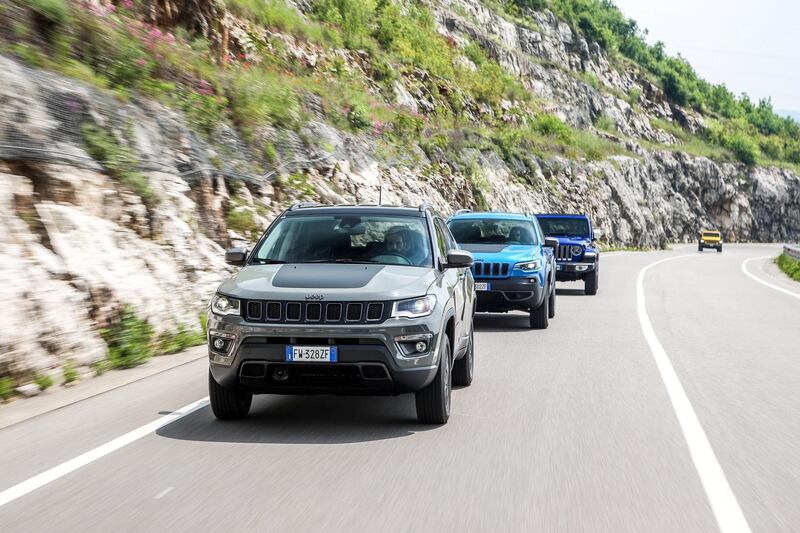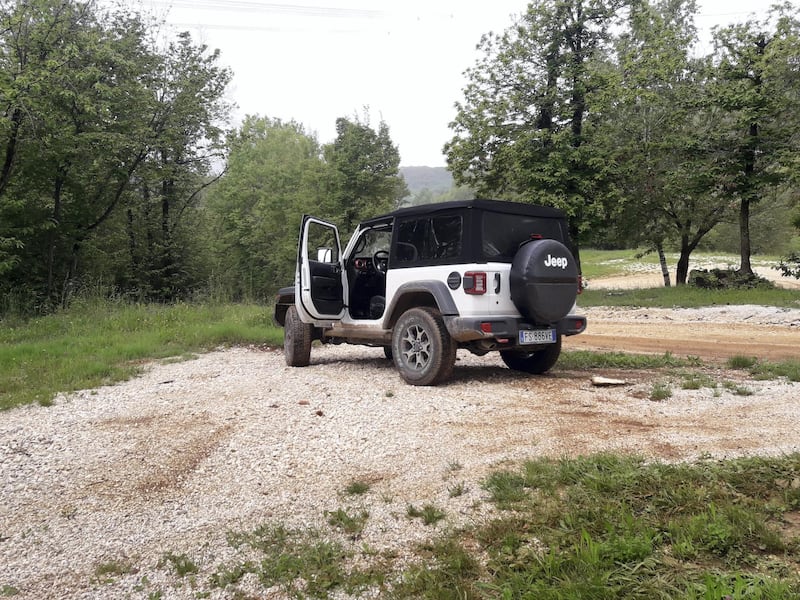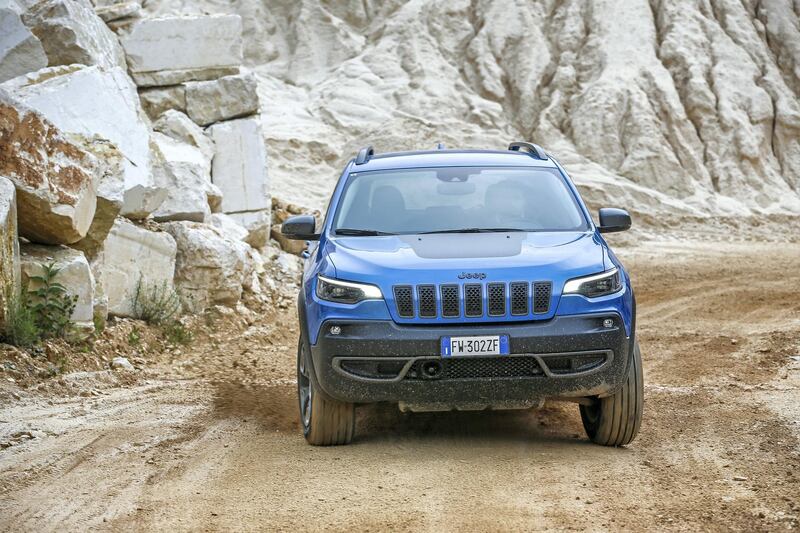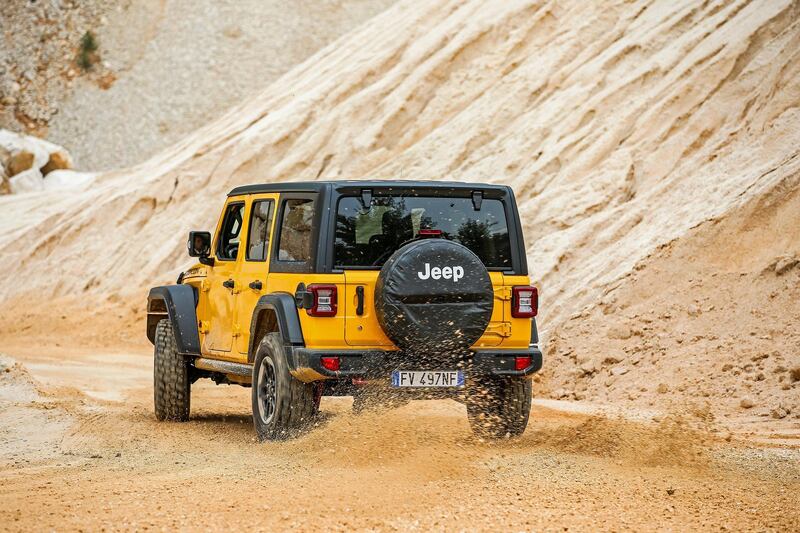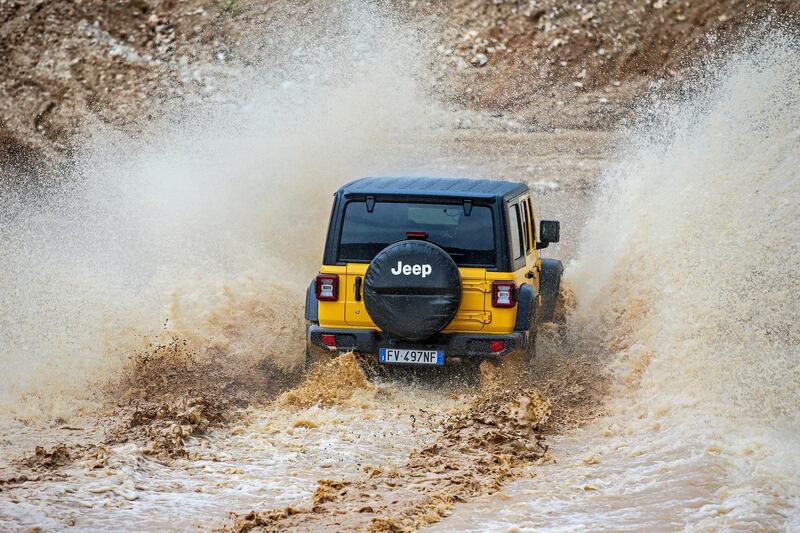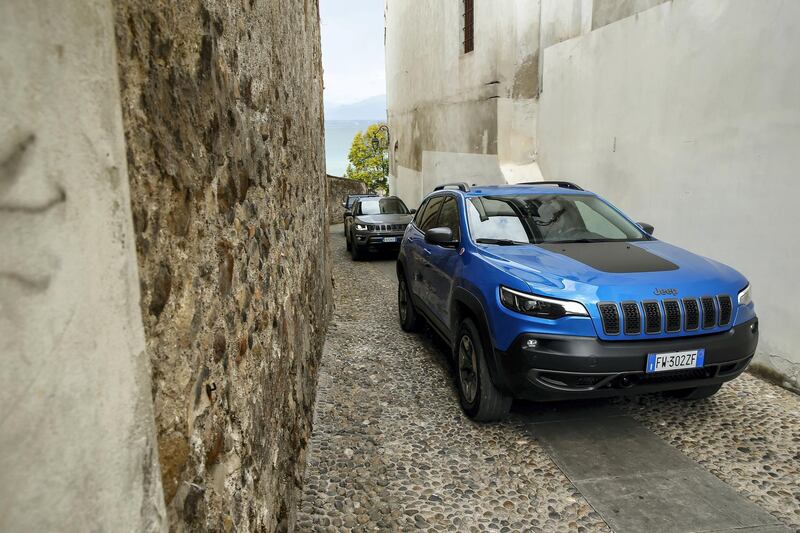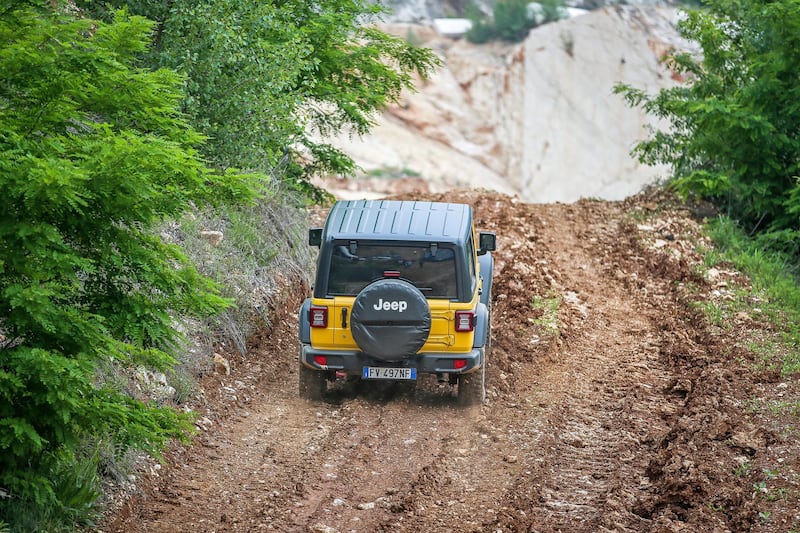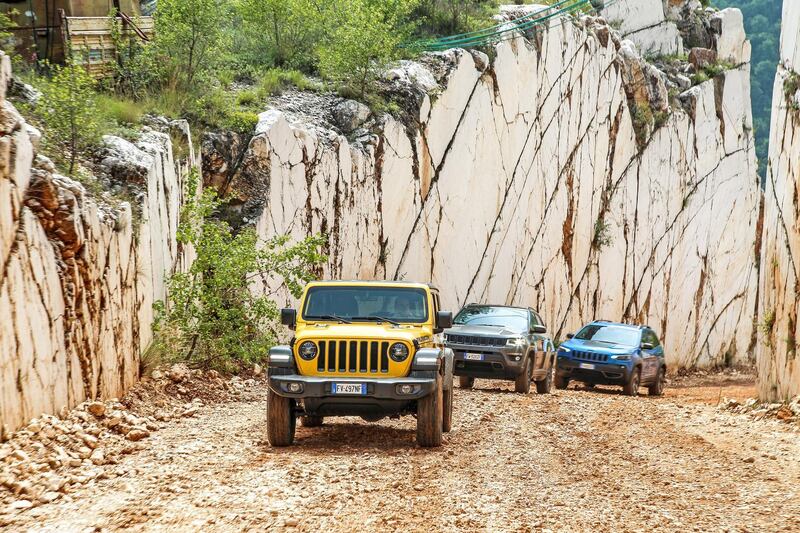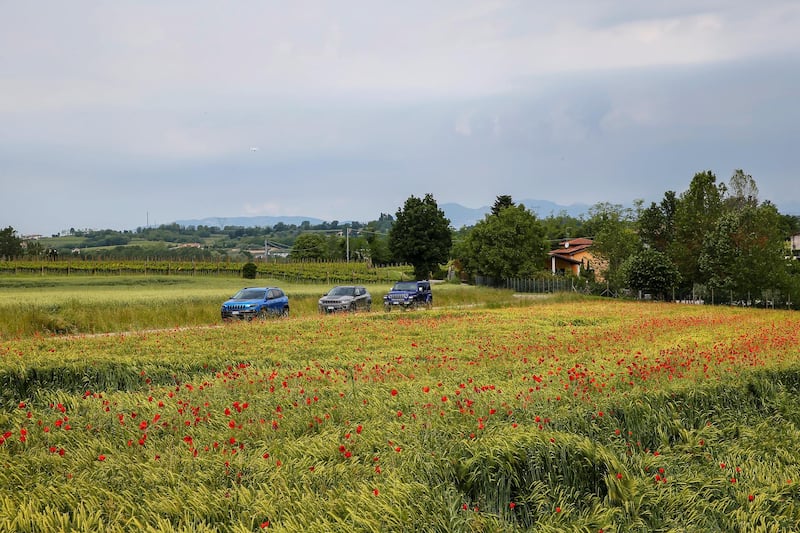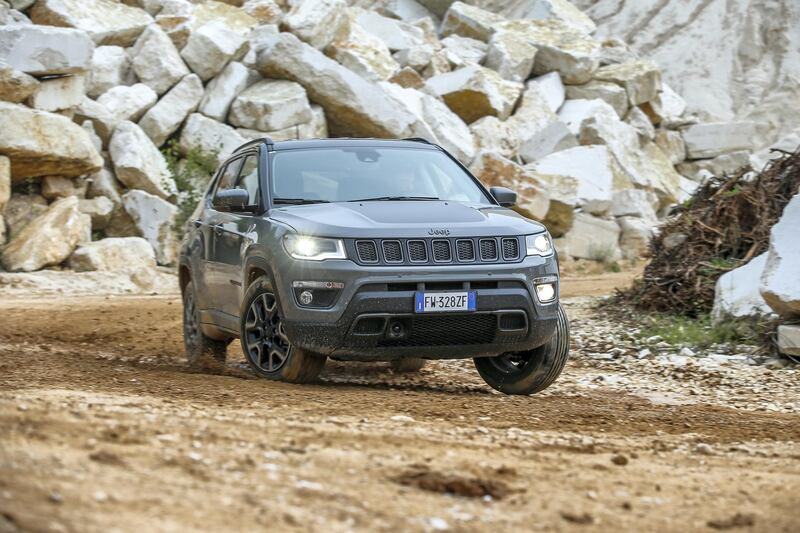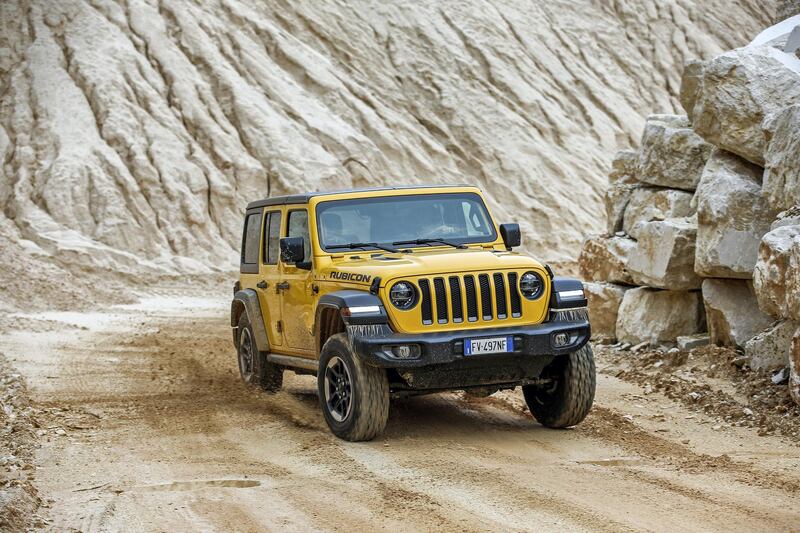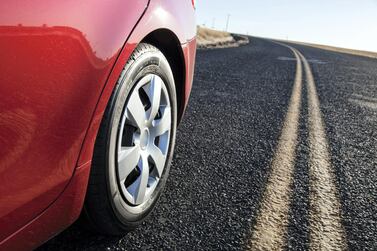If you're looking to test the capabilities of a 4x4 in the real world, you'll need a few hazards scattered around your track of choice – steep gradients, uneven surfaces and quite a lot of mud and gravel come to mind.
You could add a few other things into the mix as well, not least a smattering of industrial vehicles along the route and the risk of a perilous drop down a steep slope, should your steering not be up to par. Conveniently, all these elements were present when Jeep showcased its new range on a specially created track that dodged in and out of a working marble quarry, Le Cave di Serle, high up in the hills around Italy's Lake Garda.
The scenario was visually spectacular and daunting at the same time. The drivers assembled to give the cars a battering clearly had mixed feelings about what lay ahead. Even the road sections where you'd be on tarmac twisted around like a confused snake, unsure of which way it wanted to go.
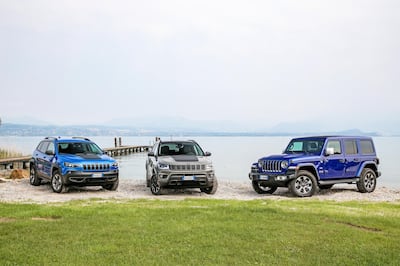
The fleet of Jeeps assembled for the challenge included the Renegade, Compass, Wrangler, Cherokee and Grand Cherokee, with a number of variants in between. There were no faux off-roaders here, even at the base level (apparently this applies to the car maker's entire range – Jeep maintains all its vehicles are designed for the rough stuff). Currently, the ace of spades in the Jeep deck is the Grand Cherokee Trackhawk.
Without getting too technical, it has a supercharged 6.2-litre V8 engine that produces 707hp. That’s the kind of power likely to make a lot of off-roaders develop the automotive equivalent of an inferiority complex and quite sufficient to get those behind the wheel out of sticky situations in the harshest conditions. By comparison, the Compass (no slouch itself) makes do with a 2.4-litre motor that produces 180hp.
The course's initial obstacle was a tough one – a downhill mudslide, rapidly straightening out, that you could only get through by applying full power in low gear as you hit the most slippery part. That wasn't unusual for what was to follow. Narrow, rocky uphill sections preceded flooded areas and hairpin bends littered with the kind of detritus you'd expect in any working quarry. All of it was easy to lose traction on if you were not paying attention. And much of the course was surrounded by the cranes, diggers and cutting equipment that work crews needed to extract marble from the hillside.
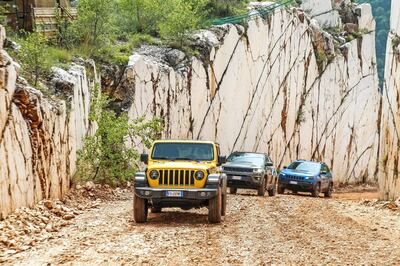
The hardiest vehicles in the group could take on what seemed at first glance to be sheer slopes, under the watchful eye of a marshal who was clearly an expert in the dos and don'ts of driving in this sort of terrain. He stopped drivers as they approached to proffer much-needed advice and, despite most of the instructions being given in hand gestures, everyone understood exactly what he wanted them to do when he back-pedalled from the window and yelled: "Full power! Go, go, go!"
It was nerve-racking stuff, but the most extreme Grand Cherokees and Wranglers took on this kind of obstruction with ease, gripping the scree-strewn upward path as they ground their way to the top.
Toughness is a trait all Jeeps have, if the current range is anything to judge by – bangs and crashes from underneath were audible to participants both in and out of the vehicles when drivers had to tackle the nastiest obstacles, but, despite repeated trips around the course, neither man nor machine needed medical or mechanical attention.
Despite this apparent sturdiness, these are pleasant vehicles to sit in. All of the models have comfortable cabins, with levels of driver aids and security features beyond the basics. No one would have said this about vehicles of this sort in times past.
The entire range, big and small, handled well on the road, too, as the course dipped in and out of the village of Serle.
With its winding tarmac trails, it was not difficult to see why the area is so popular with tourists.
If you're talking about a brand whose vehicles are designed to deal with the toughest off-road conditions, only a few names will come to mind. Jeep, though, is the only one that can claim to have specifically forged its early models with the rigours of life in the Second World War in mind.
That original, green, open-top workhorse is probably one of history’s most recognisable vehicles. It is a staple in motor museums everywhere, not least in the military section of the Emirates National Auto Museum in Abu Dhabi. Even Land Rover has to doff its cap in Jeep’s direction, as the British marque’s earliest creations were built using the chassis and axles of those very same 1940s US originals.
It remains to be seen how the new range will perform in a UAE environment, but anything that can take on an Italian marble quarry without damaging itself (or the drivers inside) has to be of interest. There’s always a dune or two that needs bashing, after all, and it’d be rude not to make use of that sand mode when they’ve gone to the trouble of putting the option there.
